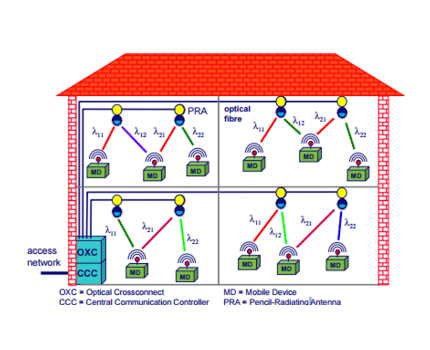Infrared Wifi: 100 times faster than the current one.
This is the achievement achieved by Joanne Oh, a researcher at the University of Eindhoven. By developing a low-intensity infrared “network” to transmit data within an environment, she obtained a formidable system: 40 Gigabits per second of speed and no overhead (each device uses its own infrared “ray”).

The system is simple and in principle very economical to set up. The data is distributed by some small antennas mounted on the ceiling and able to direct the infrared rays with extreme precision on the connected devices. There are no moving parts, no maintenance. Very little energy needed for operation and extreme safety: an infrared range is used that has no effect on the retina.
The advantages of the new infrared wifi

If you move within an environment and leave the range of one of the antennas, the immediately available antenna will take charge of the device. For each device there is a precise wavelength, no more overloads, no more interference from other nearby WiFi networks. The current system uses radio signals with a frequency of 2.5 or gigahertz: infrared WiFi uses wavelengths from 1500 nanometers upwards. We are talking about frequencies above 200 terahertz. For this reason the capacity will be much higher: tests have shown the possibility of transmitting (within a radius of 2 and a half meters) almost 43Gbit/s.
The research, also funded by the European Community, has shown truly encouraging signs that will lead to the adoption of this technology (or a similar technology, there are several research laboratories working in this direction). How soon will we be able to see infrared wifi around? Given the current state of the tests (practically complete for the download and in progress for the upload) it will take approximately 5 years before seeing this new system marketed.
The article from the University of Eindhoven on infrared wifi


